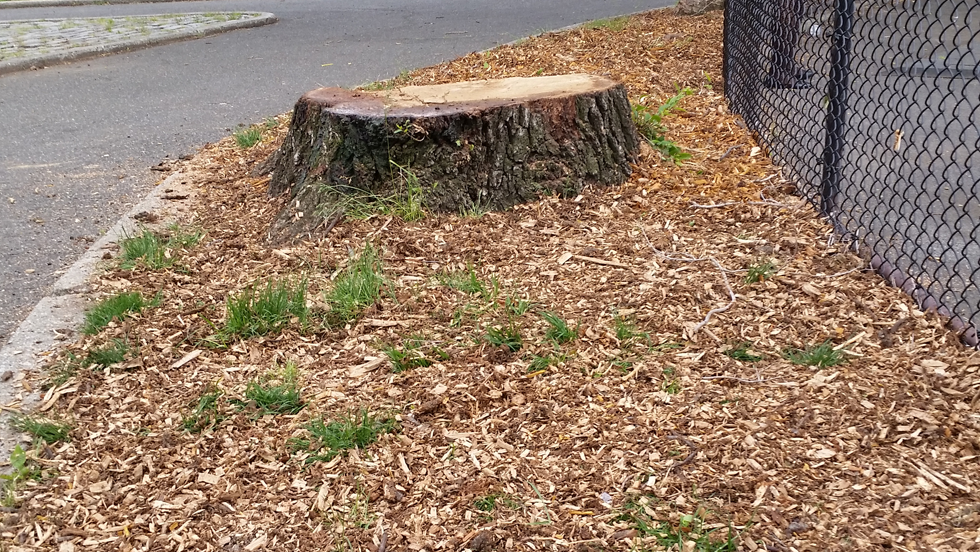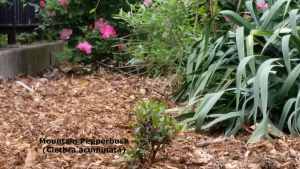Its My Park Day May 21, 2016, Protecting Our Trees and Plants

Brower Park Community Volunteers make a difference.
This weekend volunteers weeded plant beds and spread mulch around the trees surrounding the children’s playground and in a plant bed near the Monarch Butterfly Garden. We also planted 3 new bushes protecting them in a mulch bed. NYC Parks Forestry, very kindly provided mulch made from Brower Park trees that had just been cut down. We are working very hard to preserve Brower Park’s trees and plants. Volunteer today!
As many of you have noticed we have been experiencing the loss of Brower Park’s old growth trees; the Theodore Roosevelt oaks planted in 1919–are centenarians. Several trees date back to the late 19th Century and were standing before the public opening of Brower Park in 1894. Many of the Brower Park community have shed tears for each tree that has been lost –whether to hurricanes Irene and Sandy or to disease. Since Hurricane Irene Brower Park has lost close to 40 trees. Forestry has planted approximately 33 trees to replace those that have been lost. The urban forest, of which Brower Park is a part, is so important to maintaining our quality of urban life that NYC Forestry’s citywide policy is to replace each tree that is lost with the goal of planting 5 trees for every tree lost.
Why does Forestry cut down healthy looking trees?
Why does a NYC Parks Arborist decide to take down a tree? To prevent harm to human life. There was a danger that the trees near the playground were compromised and could have fallen down in a stiff wind. The photo of the stump shows red rot within the trunk.
Why do trees lose their vitality?
The air contains pollutants, roots are strangled by compacted soil that cannot hold enough water or nutrients (microorganisms and organic material) for healthy growth. Concrete that surrounds the trees prevents oxygen and water from reaching the roots. Foot traffic damages roots that have surfaced to reach oxygen and water and nails and staples create a wound in the tree’s bark (its protective skin). Pollutants in the air, in building materials, ammonia in animal waste add to the tree’s distress. Just like human beings who have a poor diet and live in a polluted environment, they have a more difficult time fighting off disease and insect infestations or maintaining a strong interior structure. They weaken with time. They lose branches and put out fewer leaves, their root systems deteriorate and may not be able to keep the tree upright in a strong wind or heavy rain. The cellular structure of the trunk itself can deteriorate. Ground roots had been wounded by foot traffic. Red rot was evident in some of the trees recently cut down near the playground.
Old tree–Young tree
A young tree does not have the same capacity of a mature tree to filter carbon and other particulates out of the air, reduce flooding, cool a sufficient volume of air to reduce energy costs, provide shade, and provide a safe home and diet for wildlife. They are an investment in the future. Most new trees measure 3″ caliper (diameter) and are approximately 10-12 years old and cost in the vicinity of $1500. Cities are a stressful environment for trees and they struggle to maintain a healthy biology. That is why Friends of Brower Park views one of our chief responsibilities as citizen stewards to care of both park and street trees. We believe that the Brower Park community’s proactive efforts will keep our old growth trees (park and street trees) and new young trees vital and growing and servicing other life on this planet.
If you would like to learn more about tree decay download the USDA Technical Report “Wood Decay in Living and Dead Trees: A Pictorial Overview by Walter C. Shortle and Kenneth R. Dudzik (June 2012).
[eab_single id=”1522″] Friends of Brower Park, Inc.
Friends of Brower Park, Inc.


